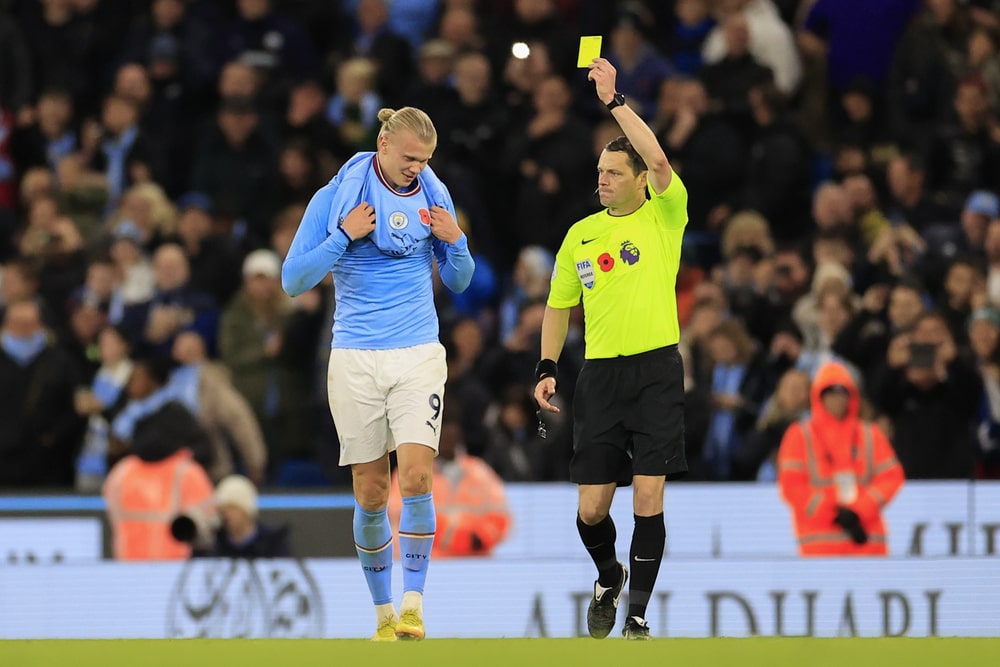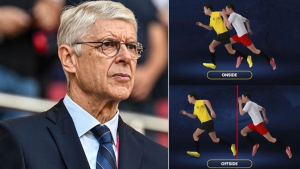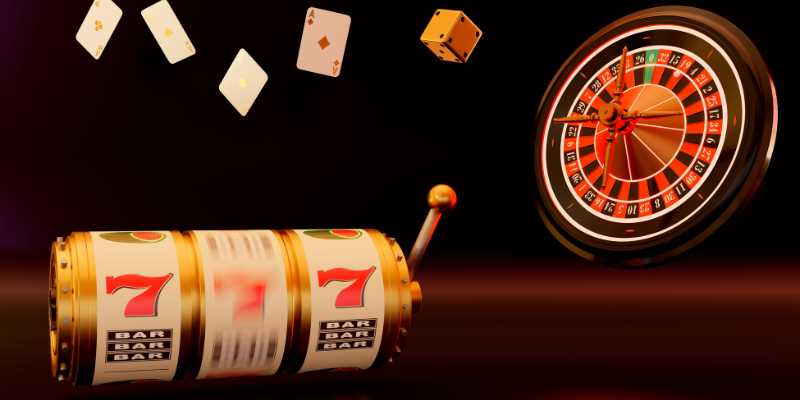Sports have always been a way for people to compete, enjoy and bond with others. Whether it’s watching your favorite team play or participating in a game yourself, sports bring out a sense of passion and excitement that is hard to replicate in any other aspect of life. However, with all the thrill and energy that comes with sports, there are also certain rules and regulations that must be followed to ensure fair play and safety for all involved. And when these rules are broken, there are consequences that follow. This article will dive into one particular consequence – the infamous yellow card.
What is a Yellow Card?
A yellow card is a form of disciplinary action given to players by the referee in various sports, such as soccer, rugby, hockey, and more. It is used as a warning to players who have committed an offense on the field, but not severe enough to warrant a red card. This card was first introduced in 1970 by FIFA, the international governing body of football, to keep track of cautionable offenses and help maintain fairness and discipline in the game.

A yellow card is a disciplinary measure issued by the referee in sports like soccer, rugby, hockey, and others
Different Types of Yellow Cards
There are primarily two types of yellow cards – the traditional and the temporary ones. The traditional card is given for a specific offense committed by a player, while the temporary card is given for an accumulation of minor offenses throughout a game. Once a player receives a temporary card, they must leave the field for a set amount of time before being allowed back in.
Traditional Yellow Card
The traditional yellow card is given to a player who commits one of the following offenses:
- A reckless tackle on an opponent
- Excessive use of force while challenging for the ball
- Deliberate handball to prevent a goal
- Dissent towards the referee or their decision
- Delaying the restart of play
- Failing to respect the required distance for a free-kick or throw-in
The referee will show the player a card by holding it up in the air, with both hands showing the offender’s number. This serves as a warning that if the player commits another cautionable offense, they will be given a red card and ejected from the game.
Temporary Yellow Card
The temporary yellow card is a newer concept introduced to certain sports, such as rugby and field hockey. It is used to keep track of minor offenses committed by players throughout a game. If a player receives two temporary cards, they will automatically receive a red card and be ejected from the game. However, unlike the traditional card, the temporary one has a time limit attached to it. Once a player receives a temporary card, they must leave the field for 5-10 minutes, depending on the sport, before being allowed back in.
The Role of Yellow Cards in Sports
The primary purpose of a yellow card is to serve as a warning to players who have committed an offense on the field. It helps referees maintain control over the game and prevent it from spiraling out of hand. By issuing yellow cards, referees can keep the game fair and avoid any potential confrontations between players. It also serves as a deterrent for players, as they know that repeated offenses will lead to a red card and ejection from the game.
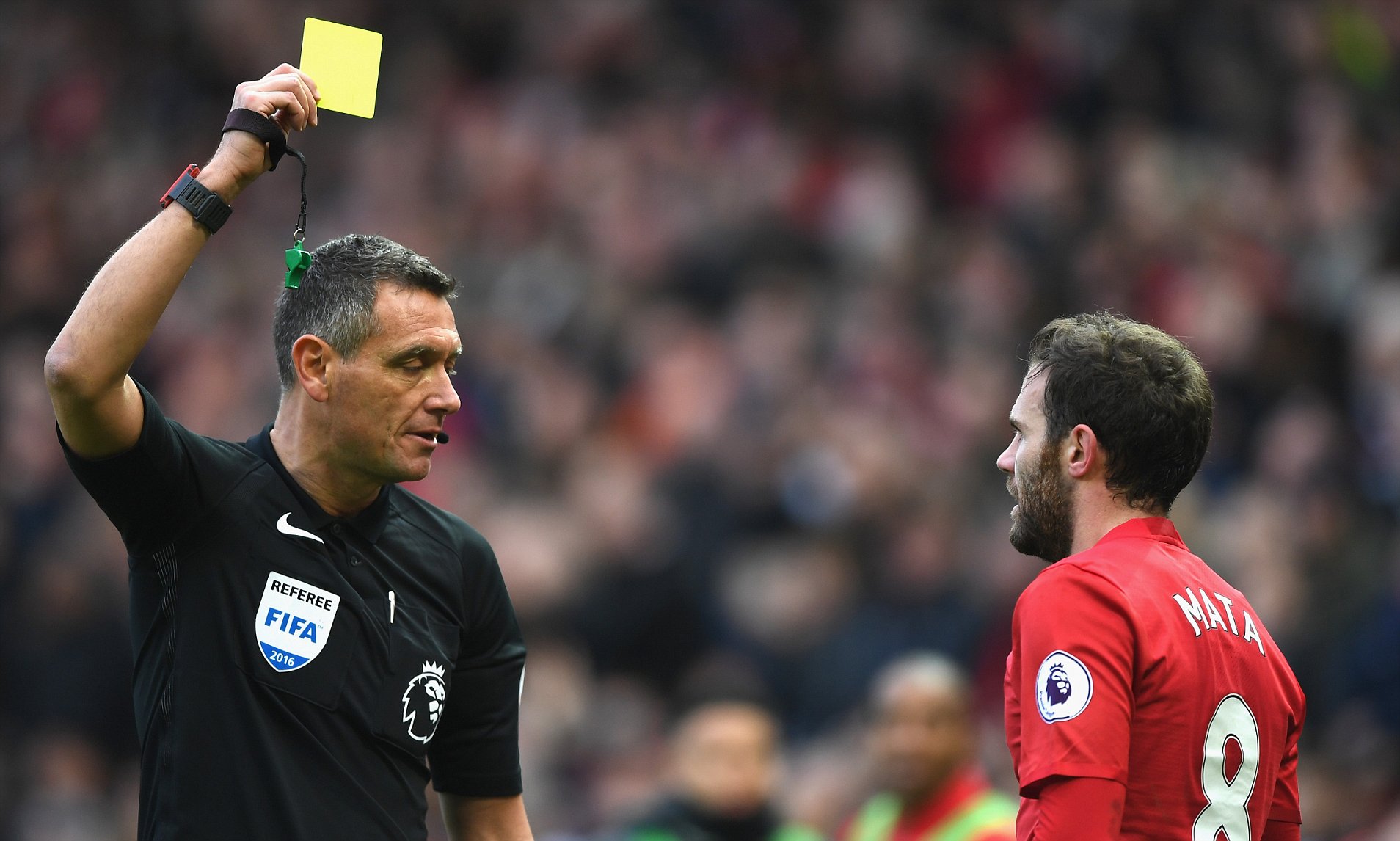
The main purpose of a yellow card is to caution players who have committed an offense on the field
Fair Play
Fair play is a fundamental aspect of any sport. It ensures that all players have an equal opportunity to compete and win without any unfair advantages. Yellow cards play a significant role in maintaining fair play on the field. By cautioning players who commit fouls or unsportsmanlike behavior, referees ensure that the game is played within the rules and not unfairly influenced by any one particular player or team.
Discipline and Sportsmanship
Sports should not only be about winning; they should also teach players the importance of discipline and sportsmanship. Yellow cards serve as a reminder to players that their actions have consequences and that they must behave accordingly. By showing blatant disregard for the rules, players are at risk of being ejected from the game and potentially causing harm to themselves or others. In addition, yellow cards also promote good sportsmanship by encouraging players to respect the decisions made by referees and accept their warnings with grace.
Penalty System
In some sports, such as soccer, yellow cards are also used as part of the penalty system. In addition to issuing a yellow card, the referee may also award a free-kick or penalty kick to the opposing team, depending on the severity of the offense. This serves as an additional deterrent for players who may try to bend the rules for their team’s advantage.
The Impact of Yellow Cards on Players and Teams
Yellow cards can have a significant impact on both individual players and teams in various ways. Let’s take a closer look at the effects of yellow cards and how they can shape a game or even a season.
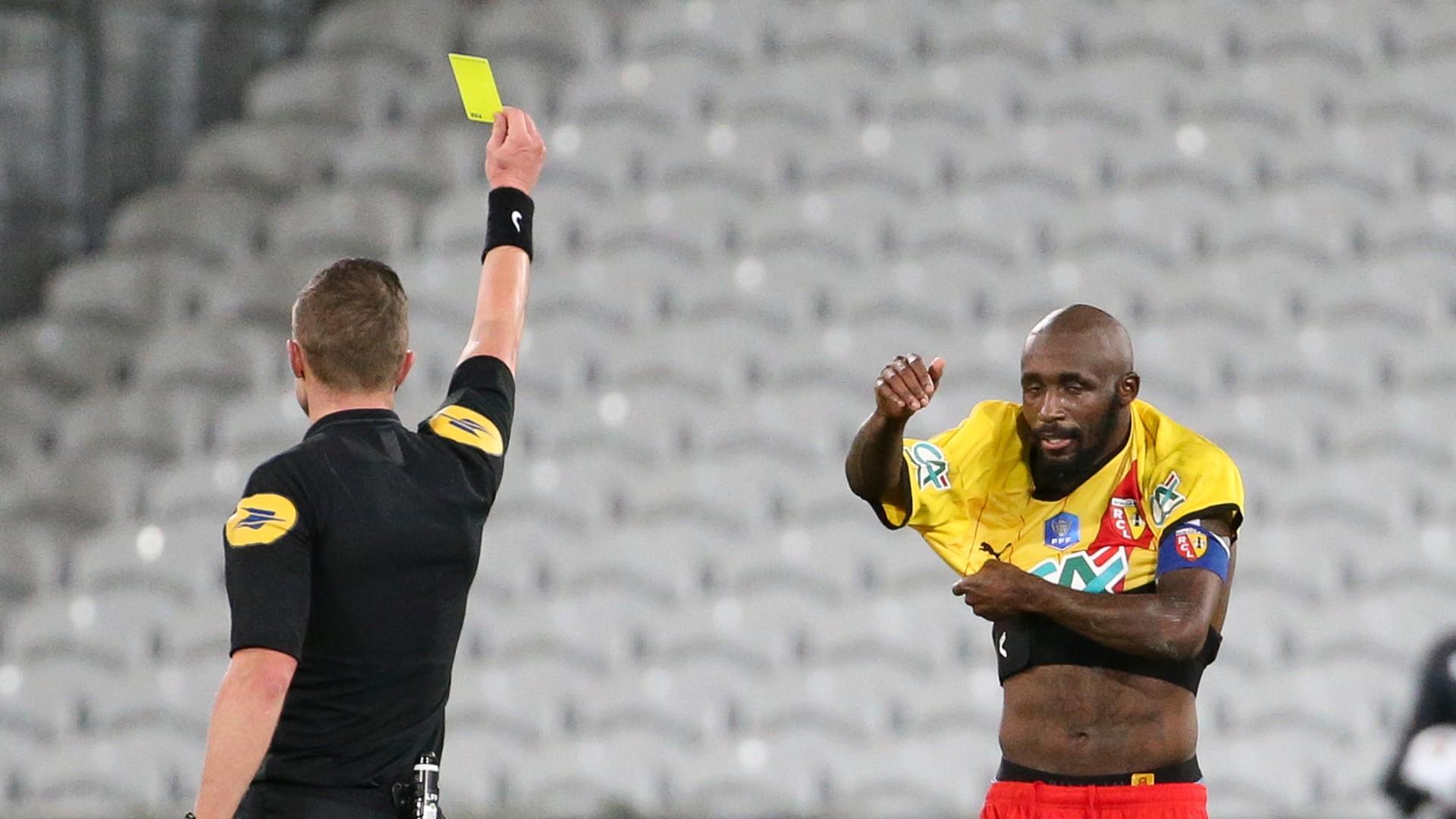
Yellow cards can significantly affect both individual players and teams in multiple ways
Player Suspensions
In most sports, if a player receives a certain number of yellow cards throughout a season, they will face a suspension for one or more games. This is known as the accumulation rule and is used to discourage players from constantly committing fouls or unsportsmanlike behavior. For example, in professional soccer, a player must serve a one-game suspension if they receive five yellow cards before the halfway point of the season, and two games for ten yellow cards throughout the entire season.
Additionally, in some sports, such as rugby, if a player receives a red card and is ejected from the game, they will automatically receive a suspension for several games. This not only affects the player but also has an impact on the team’s overall performance, as they must now play without one of their key players.
Strategic Impact on the Game
Yellow cards can also have a strategic impact on the game, especially in sports where a player must leave the field for a set amount of time. In soccer, for example, if a team’s star player receives a yellow card and must leave the field for ten minutes, the opposing team may use this opportunity to gain an advantage and score a goal. This not only affects the score but also changes the momentum of the game.
Moreover, coaches and managers must be mindful of players who are at risk of receiving a suspension due to accumulated yellow cards. They must carefully plan out their starting lineup and substitutions to ensure that they do not lose key players to suspensions in crucial games.
Psychological Effects
Being shown a yellow card can also have psychological effects on players. It can cause frustration, anger, and even embarrassment, especially if it is shown in front of a large crowd. This can affect their performance on the field and may even lead to more fouls as they try to make up for their previous mistake. On the other hand, players who constantly commit fouls without any consequence may become more aggressive and reckless, leading to potential injuries and harm to themselves and others.
Controversies Surrounding Yellow Cards
While yellow cards serve as an essential disciplinary tool in sports, they have also sparked controversies over the years. Some argue that yellow cards are not always given fairly or consistently, leading to unfair advantages or disadvantages for certain players or teams. Let’s explore some of the controversies surrounding yellow cards.
Referee Bias
One of the most significant complaints about yellow cards is the potential bias of referees towards certain players or teams. Some argue that referees may favor star players or popular teams, resulting in leniency towards their actions on the field. Others believe that referees may hold grudges against certain players or teams and show them more yellow cards than necessary.
Moreover, the interpretation of what constitutes a cautionable offense can also vary from referee to referee. This can result in inconsistent decisions and potentially unfair punishments for players.
Simulation and Diving
Another controversy surrounding yellow cards is simulation or diving – when a player deliberately falls or exaggerates contact to try and deceive the referee into giving a foul or a card to an opposing player. Some argue that players who simulate are not punished harshly enough and continue to get away with it, while others believe that referees are too quick to give out cards for simulation without proper evidence.
This issue has become increasingly prevalent in recent years, with certain players becoming notorious for their diving abilities. It not only affects the fairness of the game but also raises questions about the integrity of players who engage in such behavior.
Impact on the Outcome of Games
As mentioned earlier, yellow cards can have a significant impact on the outcome of a game, especially if a player is suspended or must leave the field temporarily. This has led to debates over whether or not yellow cards should be abolished altogether, as some believe that they unfairly change the course of a game.
However, others argue that removing yellow cards would lead to more reckless and dangerous play on the field, ultimately putting players at risk for injuries. Moreover, the accumulation rule allows for a fair warning to players throughout a season and encourages them to adhere to the rules to avoid suspensions.
Famous Yellow Card Incidents
Over the years, there have been several memorable yellow card incidents that have made headlines and sparked debates among sports fans. Let’s take a look at some of the most famous yellow card incidents in sports history.
Zinedine Zidane’s Headbutt
In the 2006 FIFA World Cup final between France and Italy, French superstar Zinedine Zidane was infamously shown a red card after headbutting Italian defender Marco Materazzi in the chest. However, many believe that this incident could have been avoided if Zidane had not received a yellow card earlier in the game for a reckless challenge on an Italian player. He was shown the yellow card by referee Horacio Elizondo, who later admitted that he did not see the headbutt and would have given Zidane another chance had he known what had happened.
Luis Suarez’s Handball in the 2010 World Cup
Uruguayan striker Luis Suarez made headlines during the 2010 FIFA World Cup when he used his hands to prevent a goal from being scored by Ghana in the quarter-finals. The resulting handball led to a penalty kick for Ghana, which they missed, and ultimately cost them the game as Uruguay went on to win in a penalty shootout. While Suarez was ejected from the game and given a one-match suspension, many argued that he should have received a red card instead of a yellow for preventing a clear goal-scoring opportunity.
Odelín Molina’s Two Consecutive Yellow Cards
In a Cuban baseball game in 2007, pitcher Odelín Molina was ejected from the game after being shown two consecutive yellow cards by the umpire. The first yellow card was given for a pitch that was deemed too close to the batter, while the second was given for arguing with the umpire after receiving the first card. This unique occurrence sparked debates over whether or not two consecutive yellow cards should result in a red card, as is the case in other sports like soccer.
Alternatives to Yellow Cards
While yellow cards have been an integral part of various sports for decades, some are now advocating for alternative measures to be taken in cases where a player commits a cautionable offense. Let’s look at some of the proposed alternatives and how they may change the way disciplinary actions are handled in sports.
Video Assistant Referee (VAR)
One of the most talked-about technologies in sports today is the Video Assistant Referee, or VAR for short. It is used primarily in soccer to review on-field decisions made by the referee with the help of video footage. Many believe that incorporating VAR could help reduce controversies surrounding yellow cards and ensure fairer decisions.
For example, if a player is shown a yellow card for simulation or diving, VAR footage can be reviewed to determine if there was any contact or if the player purposely deceived the referee. If it is found that the player did simulate, they could receive a more severe punishment, such as a red card, to discourage such behavior in the future.
Sin Bin
The concept of a sin bin has been around in certain sports, such as rugby, for some time. It involves temporarily sending off a player who has committed a foul or unsportsmanlike behavior. This allows the team to continue playing with one less player while the offending player sits out for a set amount of time, usually 5-10 minutes. Once the time is up, the player may return to the game.
This alternative to yellow cards could potentially prevent players from being ejected from a game, especially in cases where the offense is not severe enough to warrant a red card. It also serves as a more immediate consequence for players without affecting the outcome of the game too drastically.
Conclusion
In conclusion, yellow cards are an essential aspect of various sports, serving as a warning to players who commit offenses on the field. They play a significant role in maintaining fair play, discipline and have an impact on both individual players and teams. While there have been controversies surrounding yellow cards over the years, they still remain an integral part of the game and have helped shape the way sports are played today. As technology continues to advance, it will be interesting to see if any alternatives are implemented in the future and how they may change the way we view and handle disciplinary actions in sports.
